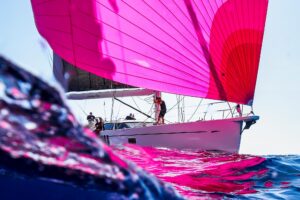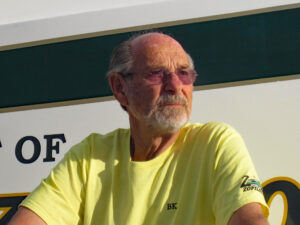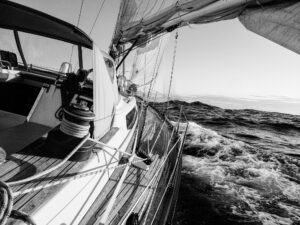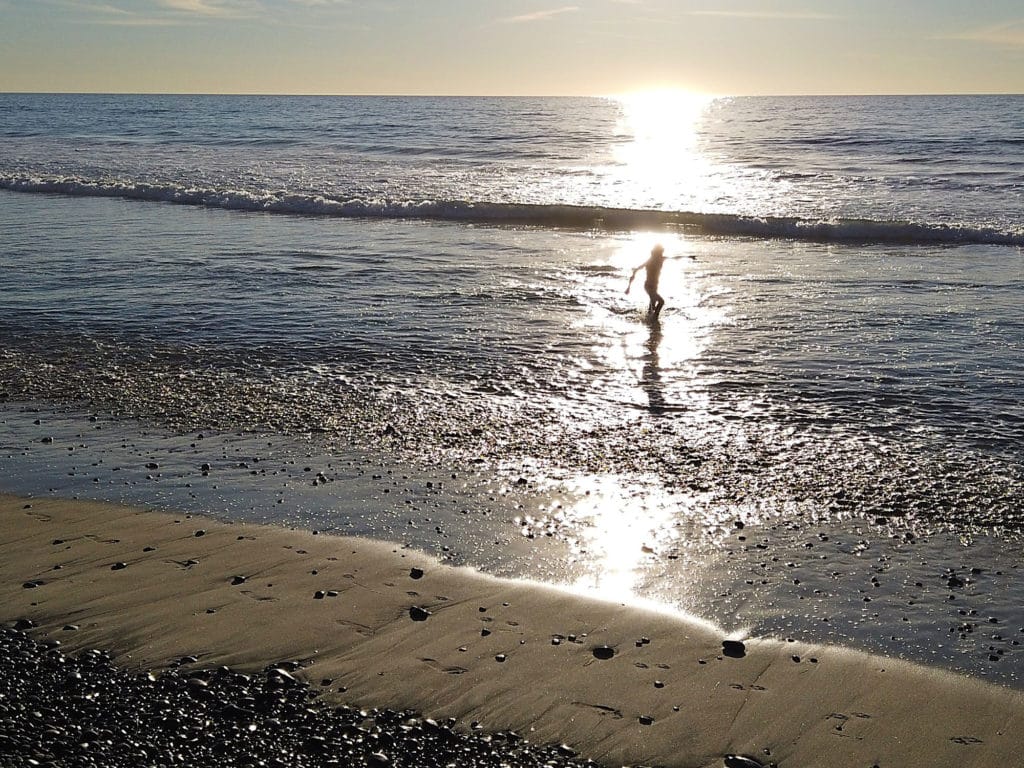
This land-travel business is complicated! We’re often asked what it’s like checking in and out of foreign countries by boat. After our Thanksgiving weekend adventure, it feels simpler!
One benefit of the Cabrales Boatyard, where Totem is located at the moment, is how close the boatyard is to the US — it’s only an hour from the Arizona border. We make runs up to Arizona for supplies, especially for things that are simpler to pick up at an Ace Hardware than they are to track down in the small town of Puerto Peñasco. Our path north towards Phoenix and back is familiar enough that some of the stately saguaro cacti are like familiar friends, landmarks along the way.
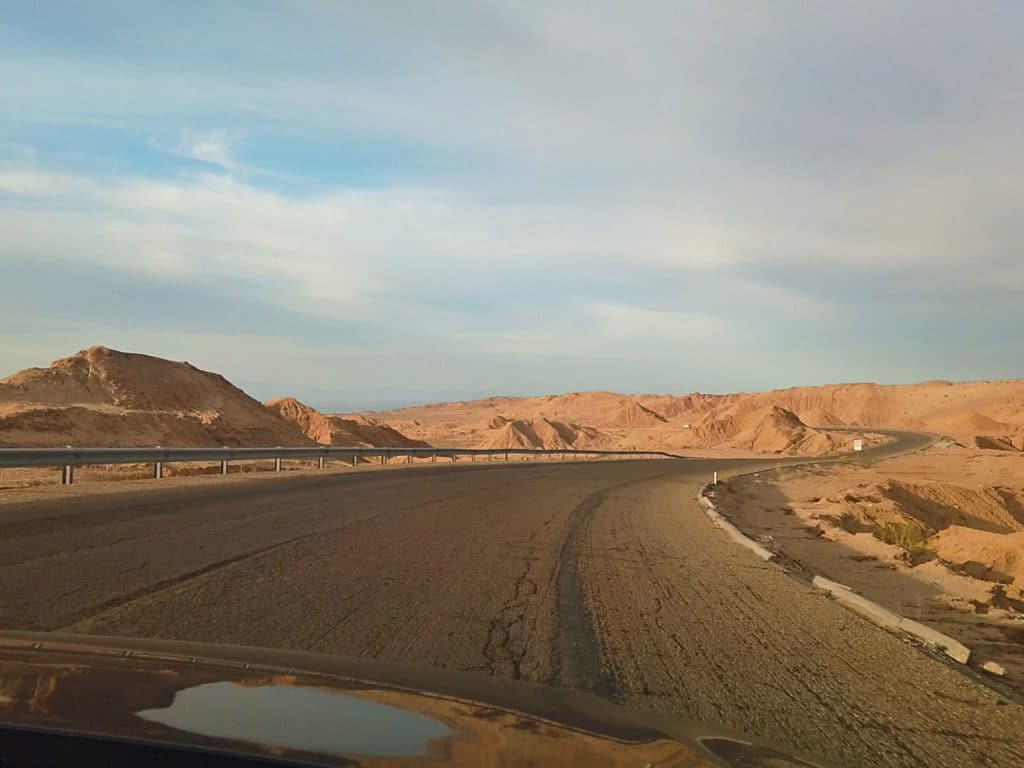
For Thanksgiving we planned a different route. Another benefit of the border proximity is the chance to visit family. Thanksgiving weekend prompts more travel in the US than any other holiday weekend and we were excited to meet up with extended relatives at Jamie’s cousin’s home in Carlsbad, California. The California scenery would be an added benefit.
We packed the car with our long list of things, including some Mexican specialties (like a little sipping bacanora – an agave product like tequila made only in Sonora; it’s a smoky, spicy treat) and a few of the ingredients and cooking tools we planned to use in the dishes we hoped to contribute to the feast.
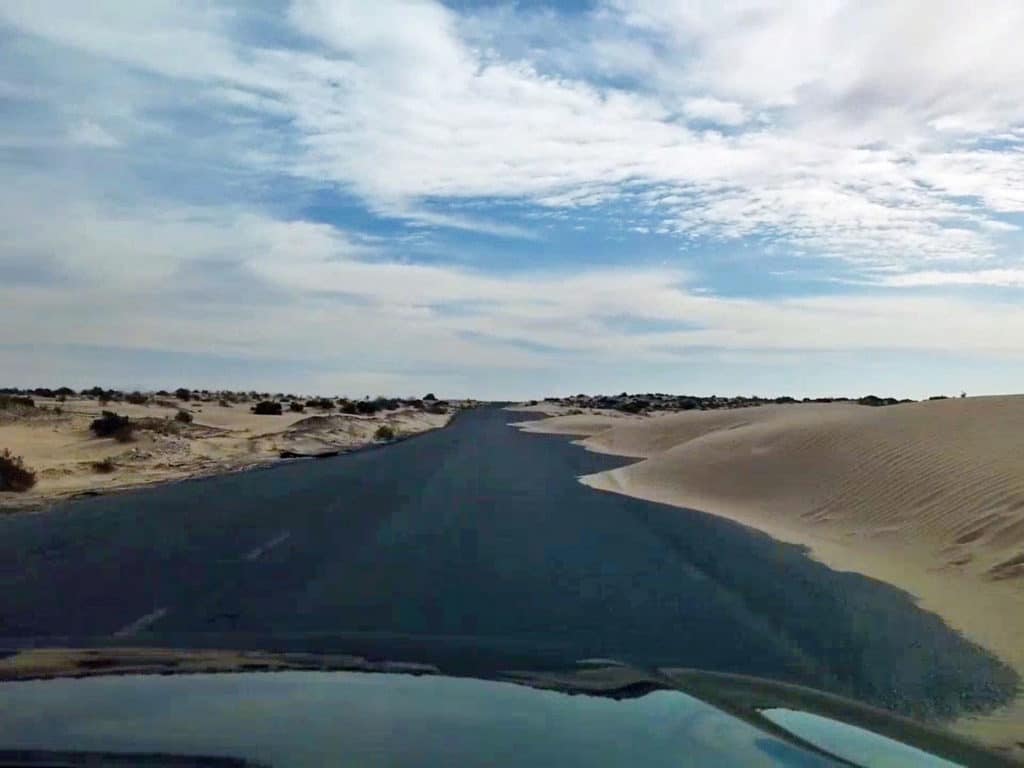
Google mapped the route as a 6.5-hour drive but the trip ended up taking us more than 13 hours from beginning to the end. The biggest delay resulted from us driving two hours out of town and realizing we had forgotten our passports. Oops! We had to go all the way back to Puerto Peñasco, retrieve our passports, and get back on the road. Good grief. Aren’t we supposed to be savvy travelers? We all laughed about it but that was four hours we didn’t need to spend driving – and $75 worth of gas.
We’d decided to cross the border at Mexicali/Calexico — when we got close we had to locate the back end of the border crossing line, a line with cars stretched for about a mile. We discovered that the gate was running on holiday hours and was due to close in about 20 minutes, at 2pm in the afternoon!
What?! This crossing is typically open until midnight! There was no way we’d make it to the front of the slow line by 2pm, so we kept driving west – knowing that no matter what time we got to Tijuana, at least that border crossing was open 24 hours.
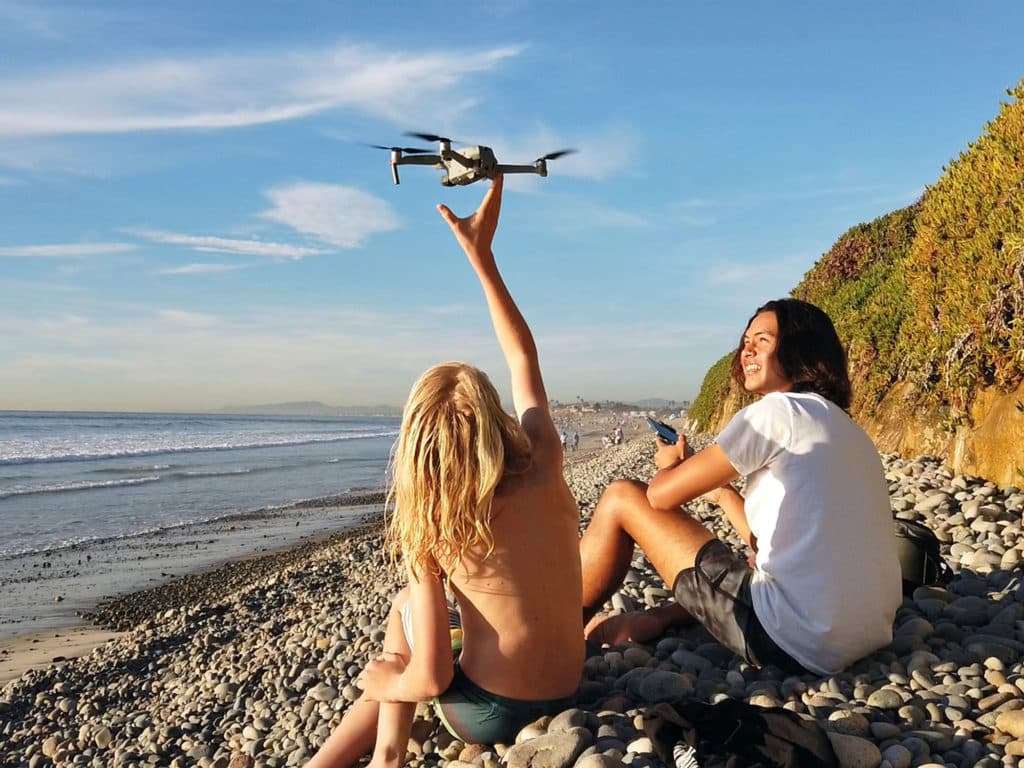
Again, we laughed at the situation – but maybe a little less than we’d laughed after the passport gaffe, though. It wasn’t a big deal, just a different route. I wondered aloud would the rule of threes kick in? What was our third challenge? Two hours later, we found out.
When we arrived in Tijuana, we aimed for the easternmost of the border crossings, as it had a shorter estimated transit time. Shorter, as in the predicted wait time on the Customs and Border Patrol’s website was for 230 minutes (yes, estimated in minutes) instead of 250 minutes (yes, that’s more than four hours) once you are actually in the line for the border station. And then, another twist: after following signs from the highway towards the border crossing, our route brought us to a point that intersected with the line of cars at a midpoint. We couldn’t cut into the line – we had to go around. The line wound out of sight, with no signs and no indication of where to find the end. We noted that event #3 had arrived: a trifecta! We wished we’d packed better snacks.
After an hour of searching and inching through Tijuana rush hour traffic, we still had no idea where the end of the line was. We worked our way through a back neighborhood, hoping to find a route parallel to the border crossing line. Somewhere in the side streets of Tijuana, Jamie spotted a street sign that said San Diego, 805 (the US border highway). We turned sharply to follow the arrow because, really, what did we have to lose? We found ourselves crawling toward the border with, again, no clear directions, all the while assuming we were inadvertently in border crossing lanes intended for people with pre-approved documentation (special RFID cards, or Sentri passes) which we did not have. I smiled and tried not to get discouraged, but I felt awfully discouraged anyway. I was prepared to plead our case with a border official and ready to plead to be allowed through instead of spending another couple of hours in Tijuana traffic.
And then, through sheer luck, our lane turned out to be general traffic line. A border crossing line for anyone! The border crossing patrol guards never even looked at our faces, although they wanted to know why our family’s passports differed from each other. All of our passports are United States passports, but their renewal dates span a few years of government changes in technology, I guess, and at least one is peppered with scores of immigration stamps.
I don’t think I have ever been so relieved to cross a border in my life, and we’ve crossed a few.
Clearing borders by sea is rarely the same twice. We enter the process having completed due diligence to the best of our ability, but with a meaningful portion left unknown. You get there, and you figure it out, with the best intentions possible.
When we arrived in Comoros it took three days of what felt like negotiations, all in a language we did not speak, for our unofficial agent to officially secure our formal entry.
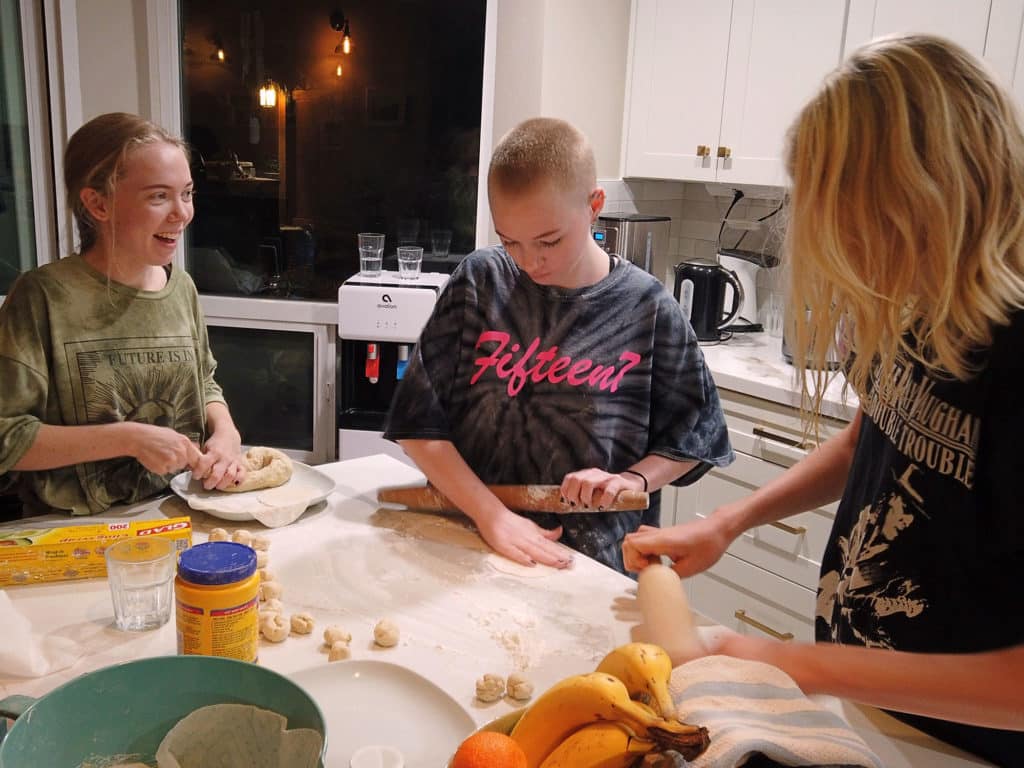
In Namibia, we had our steps for clearance out of order but were gently redirected to get on track for the right offices in the right sequence.
In Australia, the clearance and immigration officer, Mortimer, swapped the lanyard IDs on his neck as he swapped clearance roles for our arrival, all the while cheerfully detailing the many ways in which local wildlife could kill us, and how sorry he was about the $5,000 fine being levied on another other boat in the harbor that hadn’t given enough advance notice of their arrival.
Why did these border crossings and so many others feel easier? Somehow, in each of these, there was an assumed loss of control: doing our best to be prepared, then placing faith in the process. And perhaps in the many months we’ve now spent more stationary instead of itinerant, some of the expectations of privilege have crept back unwelcome into our psyches. Winding aimlessly around Tijuana’s back streets in the dusk, then after dark, felt like an incalculably greater strain on us than wondering whether we should wait in the quarantine anchorage for Seychelles officials to arrive or dinghy in to meet them in the port.
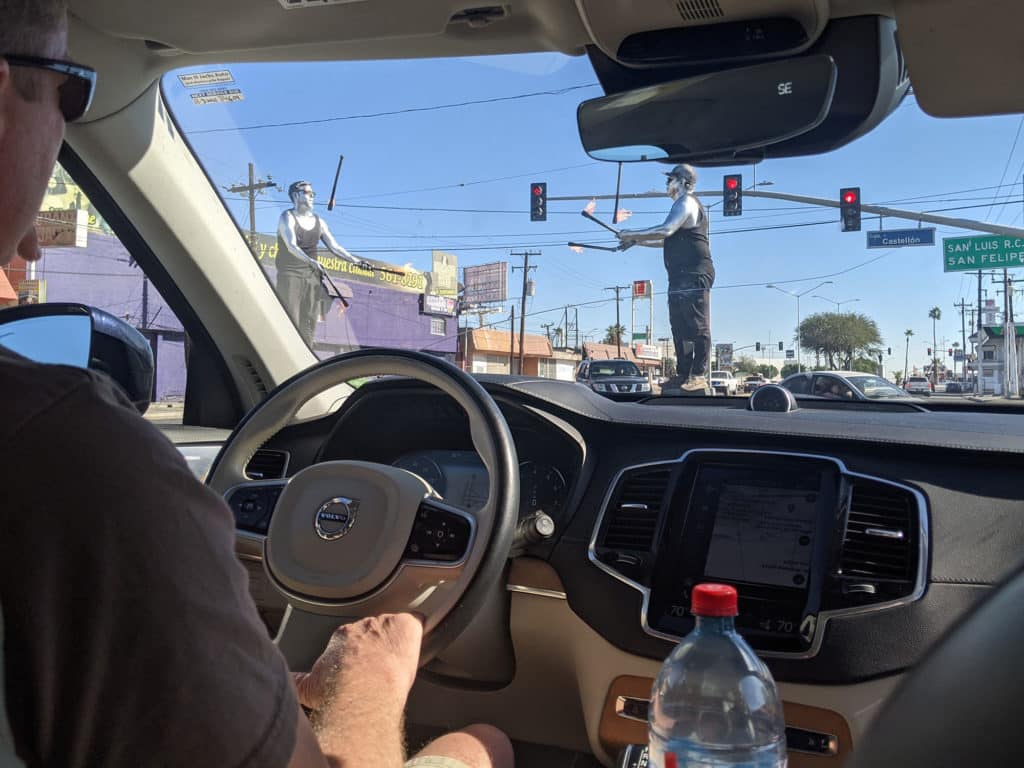
It probably didn’t help that the Mexico border crossing came at the tail end of a series of travel mishaps. While in a hotel in Phoenix before our flight to Baltimore for the Annapolis Boat show in October, I realized that I’d forgotten all my underwear (it’s hard to swing a cactus in Phoenix without hitting a Target store, so that was solved easily enough). In addition, twice in the last few months we’ve been barred from crossing from the US back into Mexico due to registration, um, issues with our vehicle. This resulted in bonus hotel nights in Arizona before trying again. And on that last trip, when we tried to cross from the US to Mexico, the Mexican border officials tried to bribe us via a Google Translate text on the phone. They invited us to pay $200 for the opportunity of proceeding across the Mexican border instead of getting sent back to the US. We paid for a hotel back in Arizona instead.
Our family in Carlsbad refilled our cups, literally and figuratively, restoring balance and reminding us what’s really important. Some deep breaths later, the very short stretch of uncertainty and tension was forgotten. I cannot wait to navigate the clearance into French Polynesia (which will be a dream, as we’ll work with the excellent Tahiti Crew agent) and learn the processes for whatever other ports we may be able to seek out in 2022.For a primer on how we check into countries by boat, see Demystifying International Clearance for Cruisers.

